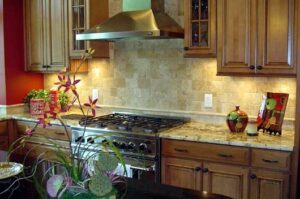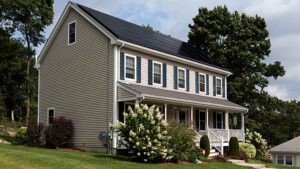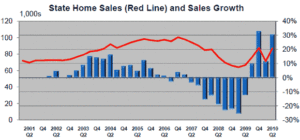When people decide to buy a home they might assume that the only expenses they’ll need to make after moving in are the monthly mortgage payment and upgrading the home so it feels like theirs. Prospective homeowners are always shocked when they realize the real cost of owning a home. Understanding all the first-time homebuyer expenses is key to a positive experience!

To ensure a better overall experience, a great place to start is by setting expectations accurately for first-time homebuyers from the start. Once set, we can get to work looking for the perfect home to meet your needs.
Americans are naturally one of the most optimistic people you’ll ever meet. You’ve been sold the American dream from a young age and taught to believe that it’s all within your grasp. A recent study showed that 85% of millennials believe they’ll achieve the dream of owning a home even though they don’t have a plan for getting there.
The ancillary costs are first-time homebuyer expenses that often take people by surprise. Then they feel overwhelmed and question their decision to buy a home. A report by Zillow and Thumbtack shows the average US home spends $9,000 a year on maintenance costs and hidden homeownership bills.
What are the first-time homebuyer expenses?
So let’s not be blind about the costs that are typical for first-time homebuyers. This is one of the most common mistakes that first-time buyers make. Instead, we’ll be informed and ahead of the game.
1. Down Payment
Since the 2009 real estate crash, it’s almost impossible to buy a home without a down payment. Having a substantial down payment in saving shows that you’ll be able to meet up with the monthly payment. Most conventional mortgages usually ask for a 5-20% down payment but it can be less with FHA loans.
If you purchase a home in a rural area you can get a USDA loan that doesn’t require a down payment. However, we advise you to consult your expert Realtor to identify top loan specialists in your area.
2. Home Inspection
While it isn’t mandatory, real estate professionals like Pyramis always advise prospective homeowners to carry out a home inspection before buying a home. A home inspection reveals hidden issues that might affect the livability or purchase price of the home. The average cost is between $300-$500 depending on the size of the house.
3. Closing Costs
When you purchase a home, you’ll often pay 3-5% of the purchase price for closing costs. These include:
- Lender fees: Fees associated with the loan product you select.
- Appraisal fee: See below.
- Attorney fees: Notary fees, government filing fees, and other expenses.
- Escrows: A separate account where you pre-fill money at the time of closing to pay the yearly homeowner’s insurance and property tax bills when they come due.
- Lender’s title insurance: This is a policy that protects the lender against financial loss in the event of title defects or other matters.
- Owner’s title insurance: This is an optional policy that protects the homeowner against financial loss in the event of title defects or other matters.
The best way to get hard numbers on these will be to work with your loan specialist who knows the details about the loan product you’ve chosen. The great news, however, is that buyers do not pay agent commission fees.
4. Home Appraisal
If you’re financing your home sale with a loan, your lender will likely charge you the cost of the home appraisal. They calculate the value of the home to ensure it’s worthy of the loan you’re taking on the home. The fee depends on the complexity and size of the building and ranges from $200-$500.
5. Property Taxes
With an online mortgage calculator, you can figure out your monthly payments but it won’t include insurance and taxes. If you have a $100,000 mortgage at 4% interest over 30 years, your interest will be $477. When you add interest, monthly mortgage principal, and taxes, the figure jumps higher.
The cost of property tax depends on your location. According to the Tax Policy Center, New Jersey and New York have the highest property tax while places like Alabama have lower taxes. Your Realtor will help you identify the property tax amount for the home you’ve chosen. Here in Jefferson County, it’s roughly 1% of the value of the home.
6. Homeowner’s Insurance
All homeowners are required to ensure their homes upon purchase. If you live in certain areas susceptible to natural disasters such as flooding, earthquake, or wildfires, you might consider additional insurance that protects you in the event of any tragedies.
These are events nobody hopes will happen but you never know when it might hit and the peace of mind homeowner’s insurance cover brings in such an event saves you a lot of money and time. Knowing the cost of insurance and the type of insurance you’ll require for your location helps to prevent sticker shock.
Using a quality insurance broker can not only get the insurance number for you, but they can also shop around and find the best deal on your policy.
7. Appliances and furnishing

A common mistake new homeowners make is forgetting about appliances because they assume the home is coming furnished as they saw on the listing. Most resale homes don’t come with all the appliances. Refrigerators are left roughly 50% of the time. Sellers in Louisville most often take their washer and dryer with them.
You’re also going to need new furniture to fill up the house. If you can’t afford to buy brand new, purchase most of these second-hand for better prices.
8. Maintenance and Repairs
As a renter when the air-conditioning is bad, you’re upset but you know that a call to your landlord usually fixes the problem. As a homeowner, you have to manage these expenses yourself. Maybe you’re aware of the cost of maintaining a home but you might have underestimated other costs such as cracked paint, jammed disposals, and leaky faucets.
The cost differs for each home but we advise you to budget 2-4% of the purchase cost annually for annual home repairs. Most likely, you won’t spend as much but erring on the side of caution is always a smart move.
9. Utility Bills
You’ve left your small one-bedroom flat for a nice three-bedroom home in the suburbs. The price of everything rises from water, electricity, and gas bills. When you live in a rental, your landlord foots the bills for some of the expenses but you’re covering the bills in your new home. Data from the U.S. census reveals that homeowners pay a few thousand dollars more for utilities when compared to renters.
Conclusion
The first-time homebuyer expenses new owners incur might seem daunting. But if you budget correctly and save money for these expenses outside of your down payment and cost of renovations you will be good. Buying a home is still a better financial investment, especially when you see the interest deduction you will get when it’s time to file your income taxes!



